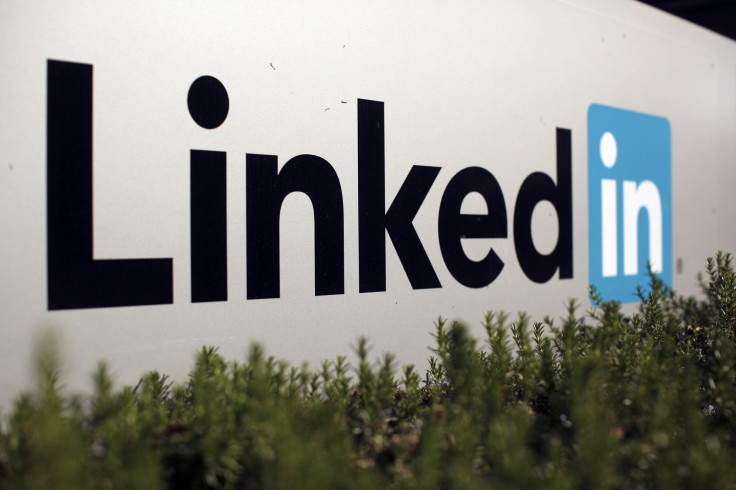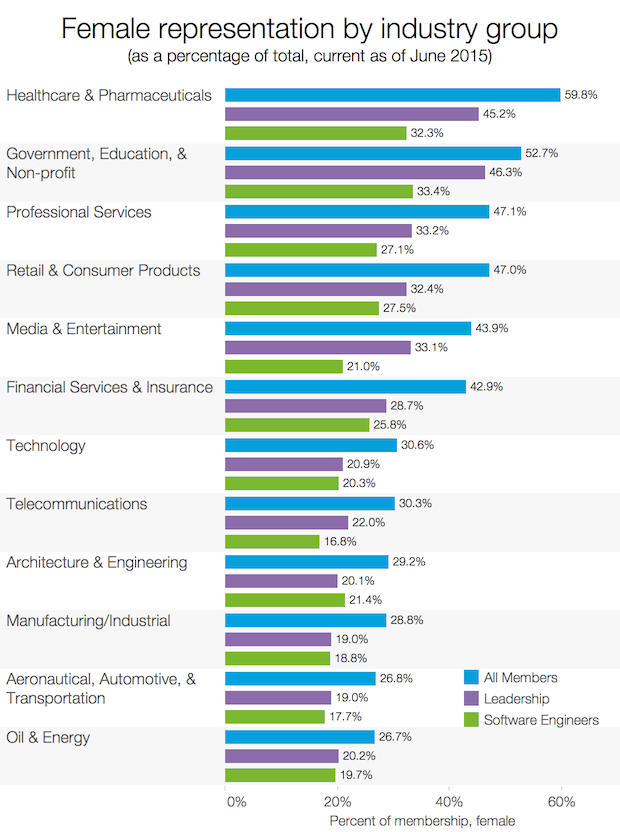LinkedIn Study Shows Tech Trails Other Industries In Hiring Female Software Engineers

As you may have heard, Silicon Valley has a tendency to primarily hire men, especially if they're white. That lack of diversity was put on display once again Wednesday by LinkedIn, which released a study showing the tech industry actually trails several other sectors when it comes to including women in software enginereering roles.
The study shows the medical, government, professional services, retail, entertainment, financial and architecture and engineering sectors all have a higher percentage of women as software engineers than the tech industry, whose talent pool is just 20.3 percent female.
"Technology companies are generally considered to be some of the most sought-after employers in the world. We have an inherent 'home field advantage' when it comes to recruiting the largest and richest talent pools of our most critical position: software engineers," LinkedIn said in a blog post. "However, despite this advantage, our data indicates that software engineering teams in tech have proportionally fewer women than several non-tech industries."

The data is not comprehensive considering it is based strictly on LinkedIn data, but it reitorates the point that Silicon Valley isn't prioritizing diversity. Some in tech complain that the lack of diversity is due to a lack of female software engineering talent, but the LinkedIn data essentially shows that the tech industry isn't doing as much as it can to find or welcome female software engineers, Fusion puts it. The same has been proven by U.S. Census Bureau data when it comes to Silicon Valley's hiring of black and Latino tech workers.
Tech diversity was brought to the forefront last year, and one year later, the results have been underwhelming, to put it nicely. Google, which was the first major company to release its workforce breakdown last year, has basically made no progress, and LinkedIn itself has managed to grow its female representation by just 3 percentage points while showing no gains for black and Latino workers over the last year.
© Copyright IBTimes 2024. All rights reserved.





















